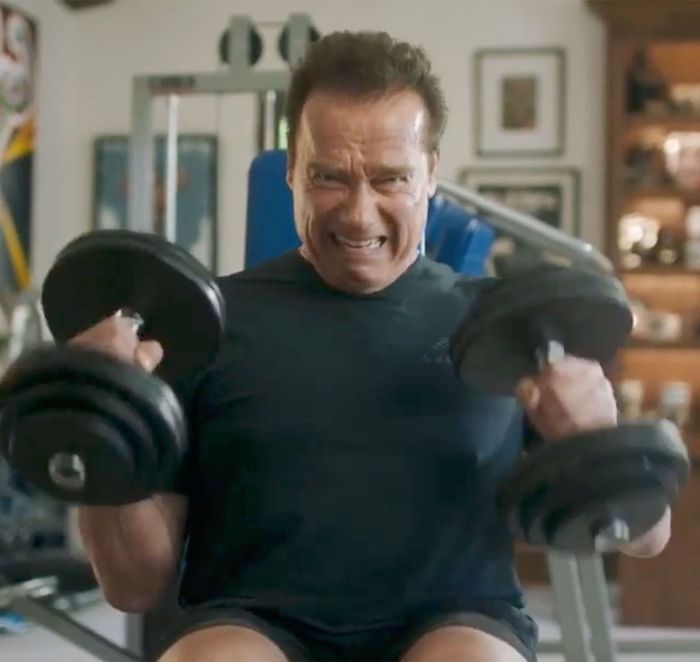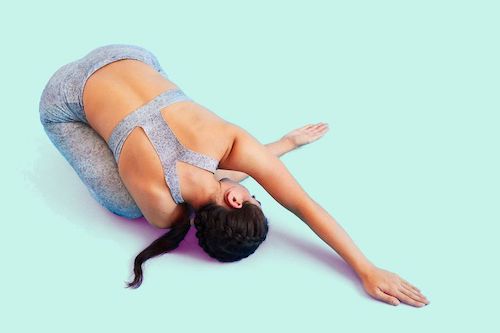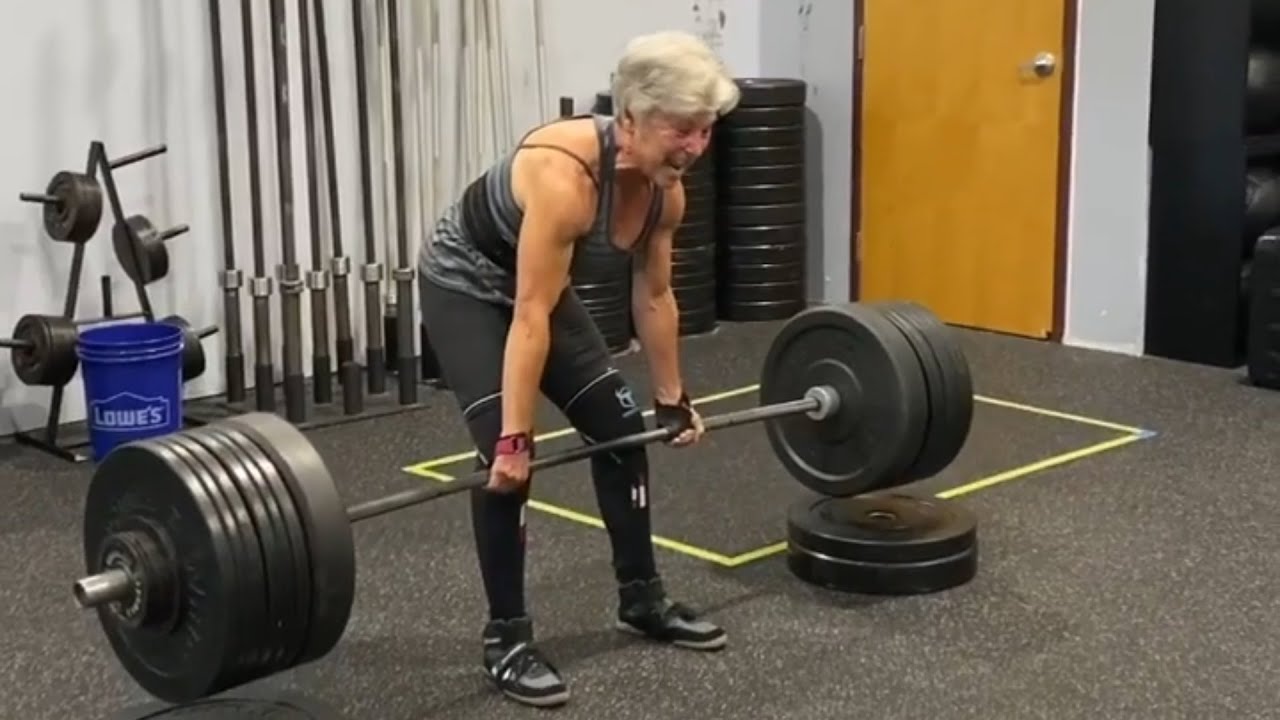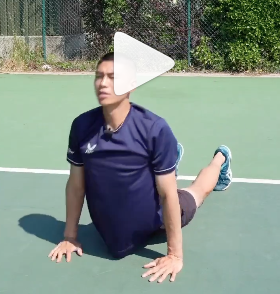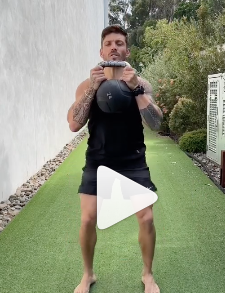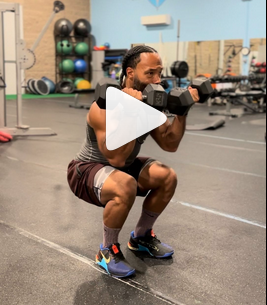The Anti-aging Workout Domains for A Strong, Long Life
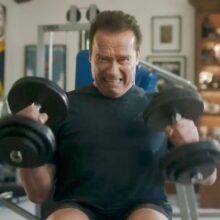
An anti-aging workout can be divided into three exercise domains: mobility, strength and cardiorespiratory training. You need them all if you want to live long and strong. In this post, I’ll tell you why and give you some exercise examples.
The subject of an anti-aging workout occurred to me as I was reading an article in the New York Times written by American memoirist, essayist, and novelist , who at (for him) the tender age of 83 writes of some of the limitations imposed upon him by his age. (Here’s the link if you have a NYT’s subscription.)
In his essay, Mr. Rosenblatt wrote: “I recently turned 83, and while there are many joys to getting older, getting out of taxis is not one of them”; this one of several indignities he remarked about. Well, I can tell you this — the taxi issue is a mobility problem.
And that got me thinking.
A week ago, I flew home from visiting my mother in Washington State. During the onboard and offboard process, I noticed the difficulty many people had lifting their carry-on luggage into the overhead bins, and then retrieving them once we landed. This was true for several people irrespective of age or gender. I can tell you this — this is a strength issue.
Then upon disembarking, all of us in the plane had to carry or roll our luggage up a ramp to enter the airport. Some people were huffing and puffing and walking slowly. This is a cardiorespiratory issue.
All this begs the question: What do you want to still be able to do as your get older?
For instance, do you want to be able to:
- Walk up a few flights of stairs carrying groceries in each hand?
- Scoop your child or grandchild from the floor and lift him/her overhead?
- Have a body that’s not too stiff to squat or be able to easily get off the floor?
- Be at a body weight that’s not too heavy to easily move about?
These either currently are, or someday may be challenges for you if you don’t regularly exercise within three anti-aging workout domains:
- Mobility training,
- Strength training, and
- Cardiorespiratory training
In this post, I’m going to review why these anti-aging workout domains are so important, and then go to some exercise videos I’ve curated for you.
I’m going to show you why this is vitally important in order to improve healthspan, and as we like to say around here, live long and strong. My visual aids in this endeavor will be Instagram Reels, which are short-form Instagram videos that can be up to 90 seconds long.
The 3 Anti-aging Workout Domains
Mobility, strength, and cardiorespiratory training are essential anti-aging workout domains that comprise a a well-rounded fitness program for healthy aging.
I’m going to delve into each, but here’s a brief overview of the value of each:
- Mobility Training: Mobility exercises improve flexibility, joint function, and range of motion. They help maintain independence by reducing the risk of falls and injuries, enhancing daily activities, and promoting joint health.
- Strength Training: Strength training increases muscle mass, bone density, and metabolic rate. It supports functional independence, reduces the risk of muscle and bone loss, and enhances overall physical strength and vitality.
- Cardiorespiratory Training: Cardiovascular exercise improves heart health, lung function, and endurance. It helps manage weight, reduces the risk of chronic diseases (e.g., heart disease, diabetes), and promotes overall cardiovascular fitness, contributing to a longer, healthier life.
Incorporating these three components into a regular fitness routine can significantly improve your quality of life as you age. What we all want as we get older is to be able to stay active, mobile, and independent until the very last moment.
So, let’s review why these three anti-aging workout domains are so important, and then I’ll show you some workout examples you can use to stay younger, longer.
The Importance of Mobility
Mobility training refers to a form of exercise or physical training that focuses on improving and enhancing your range of motion, flexibility, joint stability, and overall functional movement patterns. Unlike traditional strength training or cardiovascular workouts, which primarily target muscle strength or endurance, mobility training emphasizes the quality of movement and the ability to move joints and muscles through their full range of motion.
Key components of mobility training may include:
- Stretching: Static and dynamic stretching exercises are often incorporated to lengthen muscles and improve flexibility.
- Joint Mobility Exercises: These exercises aim to improve the health and function of the joints, enhancing their range of motion and reducing the risk of stiffness or injury.
- Foam Rolling and Self-Myofascial Release: Foam rollers or massage balls can be used to release tension in muscles and fascia, improving mobility and reducing muscle knots or trigger points.
- Yoga and Pilates: These practices combine flexibility, strength, and mindfulness, making them effective forms of mobility training.
- Bodyweight Exercises: Movements like bodyweight squats, lunges, and hip hinges can help improve mobility while also building strength and stability.
- Functional Movement Patterns: Training specific movements that mimic activities of daily living or sports activities can improve overall mobility and coordination.
- Balance and Stability Training: Improving balance and stability is crucial for maintaining mobility and preventing falls, especially as people age.
Mobility training can help reduce the risk of injury, alleviate joint pain, enhance athletic performance, and improve overall quality of life by allowing you to move more freely and comfortably.
Having good mobility and balance is particularly important as we get older.
*Aging and Mobility*
As individuals age, several changes typically occur in their mobility and physical function. Some common age-related changes in mobility include:
- Reduced Flexibility: The flexibility of joints and muscles may decrease, leading to stiffness. This can affect range of motion and make it harder to bend, stretch, or reach.
- Joint Stiffness: Joints can become stiffer with age, limiting mobility and causing discomfort. Conditions like osteoarthritis can exacerbate joint stiffness and pain.
- Decreased Bone Density: Bone density typically decreases with age, which can increase the risk of fractures and impact overall mobility.
- Balance Issues: Age-related changes in the vestibular system and proprioception (awareness of body position) can result in balance problems. This can increase the risk of falls.
- Weakening of Ligaments and Tendons: Ligaments and tendons may become less elastic and more prone to injury, affecting joint stability and overall mobility.
- Loss of Motor Neurons: Aging can lead to a loss of motor neurons, affecting fine motor skills and coordination.
It’s important to note that not everyone will experience these changes to the same extent, especially those who remain highly mobile and active as they age.
The Importance of Strength
Strength training, also known as resistance training or weight training, is a form of physical exercise that focuses on increasing muscular strength and endurance by using resistance or weights. The primary goal of strength training is to stimulate muscle growth and development, leading to improved muscle function, increased power, and enhanced physical performance.
Here are the key components and principles of strength training:
- Resistance: Resistance can be provided by various means, including free weights (e.g., dumbbells, barbells), weight machines, resistance bands, body weight (e.g., push-ups, squats), and even everyday objects (e.g., a backpack filled with books). The resistance creates tension in the muscles, leading to muscle contractions and adaptations over time.
- Progressive Overload: The principle of progressive overload involves gradually increasing the resistance or workload over time to challenge the muscles and promote growth. This can be achieved by adding more weight, increasing repetitions, or adjusting other training variables.
- Repetitions and Sets: A repetition (rep) refers to the completion of a single movement, such as lifting a weight. Sets consist of a specific number of repetitions performed consecutively, typically with a brief rest period between sets. The number of sets and repetitions can vary based on training goals and program design.
- Muscle Groups: Strength training exercises can target specific muscle groups or work multiple muscle groups simultaneously, depending on the exercise selection and technique.
- Rest and Recovery: Adequate rest between sets and workout sessions is crucial for muscle recovery and growth. It allows the muscles to repair and adapt to the stress placed on them during training.
- Proper Form and Technique: Performing exercises with correct form and technique is essential to minimize the risk of injury and maximize the effectiveness of the workout.
- Variety and Periodization: Strength training programs often incorporate a variety of exercises to work different muscle groups and prevent plateaus. Periodization involves changing the training variables (e.g., intensity, volume) over time to continually challenge the body and promote progress.
Strength training offers numerous benefits, including:
– Increased muscle mass and strength
– Enhanced metabolism and fat loss
– Improved bone density and joint health
– Better functional performance in daily activities
– Reduced risk of injury
– Enhanced sports performance
*Aging and Strength*
As individuals age, several changes typically occur in their strength and muscle mass. These changes are a natural part of the aging process and are collectively referred to as sarcopenia. While the rate and extent of muscle loss can vary from person to person, some common age-related changes in strength and muscle include:
- Loss of Muscle Mass: Sarcopenia involves a progressive loss of muscle mass, typically starting in the late 30s or early 40s. After the age of 50, muscle loss can occur at a rate of about 1-2% per year. This loss is primarily due to a reduction in the size and number of muscle fibers.
- Reduction in Muscle Strength: As muscle mass declines, muscle strength also decreases. This reduction in strength can affect the ability to perform daily activities, such as lifting objects, climbing stairs, or getting up from a seated position.
- Slower Muscle Recovery: Older adults often experience slower muscle recovery after physical activity or injury. This can lead to prolonged soreness and increased susceptibility to muscle strains or injuries.
- Decreased Muscle Quality: The composition of muscle tissue can change with age. Muscle fibers may become infiltrated with fat and connective tissue, reducing muscle quality and function.
- Changes in Muscle Fiber Type: There is a shift from fast-twitch (Type II) muscle fibers to slow-twitch (Type I) fibers with aging. This can affect explosive power and the ability to generate force quickly.
- Hormonal Changes: Age-related hormonal changes, such as a decrease in testosterone and growth hormone levels, can contribute to muscle loss and reduced muscle protein synthesis.
- Decreased Muscle Endurance: Older adults may experience reduced muscle endurance, making it more challenging to engage in prolonged physical activities.
- Loss of Muscle Function: Muscle weakness and loss of muscle function can affect balance, coordination, and overall physical performance. This can increase the risk of falls and impact daily living activities.
- Nutritional Factors: Poor nutrition or inadequate protein intake can exacerbate muscle loss in older adults. Adequate protein intake is essential for maintaining muscle mass.
It’s important to note that while age-related muscle loss is common, it is not inevitable, and its progression can be strongly influenced by lifestyle factors. Regular strength training or resistance exercise, along with a balanced diet that includes sufficient protein, can help slow the rate of muscle loss, increase muscle mass, and improve strength and functional capacity in older adults.
Strength training can be tailored to individual fitness goals, whether it’s building muscle, increasing endurance, or simply improving overall fitness. It is suitable for people of various ages and fitness levels, but it’s essential to start with appropriate resistance levels and seek guidance from a fitness professional if you’re new to strength training to ensure safety and effectiveness.
The Importance of Cardiorespiratory Fitness
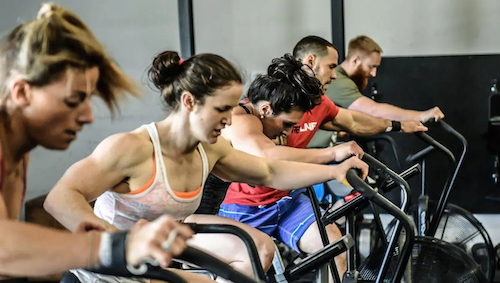
These folks are working out on “assault bikes” or “fan bikes”, whereby you push and pull with your arms as you cycle with your legs. This provides a way to quickly get to an all-out effort without the risk of pulling a muscle or compromising a joint.
Cardiorespiration — often referred to as cardiopulmonary or cardiorespiratory function — is a term that encompasses the integrated function of two crucial systems in the human body: the cardiovascular system (heart and blood vessels) and the respiratory system (lungs and airways).
Cardiorespiratory fitness, sometimes simply called “cardio,” refers to the ability of these systems to efficiently deliver oxygen to the muscles and other tissues during physical activity and remove carbon dioxide and waste products from the body.
Here’s how the cardiorespiratory system works:
- Respiratory System: The process begins in the respiratory system, where oxygen is taken in through inhalation. The lungs oxygenate the blood by exchanging oxygen for carbon dioxide through tiny air sacs called alveoli. Oxygenated blood is then transported to the heart.
- Cardiovascular System: The heart, a muscular organ, pumps oxygen-rich blood from the lungs to the rest of the body through a network of blood vessels, including arteries and capillaries. These blood vessels carry oxygen and nutrients to the body’s cells and tissues. The heart also pumps blood back to the lungs to remove carbon dioxide and pick up fresh oxygen.
- Muscular System: During physical activity or exercise, the muscles require more oxygen to produce energy for movement. The cardiorespiratory system responds by increasing the rate and depth of breathing and by increasing the heart rate to supply more oxygenated blood to the working muscles.
Cardiorespiratory fitness is a critical component of overall physical fitness and health. It can be improved through regular aerobic or cardiovascular exercise, such as walking, running, cycling, swimming, and other activities that elevate the heart rate and increase breathing rate. As individuals engage in regular cardiorespiratory exercise, their bodies become more efficient at delivering oxygen to muscles, which can lead to benefits such as:
- Improved Endurance: Enhanced ability to sustain physical activity for longer periods.
- Cardiovascular Health: Reduced risk of heart disease, hypertension, and stroke.
- Lung Function: Improved lung capacity and respiratory efficiency.
- Weight Management: Assistance with weight loss or weight maintenance.
- Stress Reduction: Reduced stress and improved mental well-being.
- Better Metabolism: Increased calorie expenditure and improved metabolic health.
- Enhanced Quality of Life: Improved daily functioning and overall quality of life.
It’s important for us to engage in regular cardiorespiratory exercise to maintain and improve our fitness levels. The American College of Sports Medicine (ACSM) and other health organizations recommend at least 150 minutes of moderate-intensity aerobic exercise or 75 minutes of vigorous-intensity aerobic exercise per week for adults, along with muscle-strengthening activities on two or more days per week.
*Aging and Cardiorespiratory Fitness*
Cardiorespiratory fitness is of paramount importance to maintain as we age due to its profound impact on overall health, longevity, and quality of life.
One key measurement of cardiorespiratory fitness is VO2 max (maximal oxygen uptake), which quantifies the body’s ability to transport and utilize oxygen during exercise. Research has consistently shown a strong association between VO2 max and all-cause mortality, and here’s why it’s crucial, especially as we age:
- Predictive of Longevity: VO2 max is a powerful predictor of longevity. Numerous studies have demonstrated that individuals with higher VO2 max levels tend to live longer. Maintaining or improving cardiorespiratory fitness as we age can contribute to a longer and healthier life.
- Cardiovascular Health: Higher cardiorespiratory fitness is associated with a reduced risk of cardiovascular diseases such as heart disease, hypertension, and stroke. It helps maintain healthy blood pressure, cholesterol levels, and overall heart function, all of which become increasingly important as we age when the risk of heart-related conditions rises.
- Metabolic Health: Cardiorespiratory fitness plays a significant role in metabolic health. It helps regulate blood sugar levels, improve insulin sensitivity, and reduce the risk of type 2 diabetes. These benefits are especially important as the prevalence of diabetes tends to increase with age.
- Muscular Endurance: Maintaining cardiorespiratory fitness supports muscular endurance, which is vital for performing daily activities and maintaining independence in later life. This can help older adults maintain mobility and reduce the risk of falls and fractures.
- Cognitive Function: Research suggests a strong link between cardiorespiratory fitness and cognitive function. Higher fitness levels are associated with better memory, cognitive performance, and a reduced risk of age-related cognitive decline and neurodegenerative diseases like Alzheimer’s.
- Quality of Life: Good cardiorespiratory fitness enhances overall quality of life as we age. It allows individuals to remain physically active, engage in social activities, and enjoy a higher level of independence, which is essential for maintaining mental and emotional well-being.
- Reduced All-Cause Mortality: Studies have consistently shown that individuals with higher levels of cardiorespiratory fitness have a lower risk of all-cause mortality. This means they are less likely to die from any cause, including chronic diseases and accidents.
Maintaining cardiorespiratory fitness as we age typically requires regular moderate aerobic exercise (walking, jogging, swimming, or cycling) along with peak exertion anaerobic exercise (sprinting while running, biking, swimming and high intensity interval training).
The American Heart Association recommends at least 150 minutes of moderate-intensity aerobic exercise or 75 minutes of vigorous-intensity aerobic exercise (usually referred to as “anaerobic”) per week for adults to maintain or improve cardiovascular fitness.
It’s essential to remember that it’s never too late to start exercising and improve cardiorespiratory fitness. Even modest increases in physical activity can have significant health benefits, especially for older adults. However, don’t jump into the deep side of the pool before you learn to swim. If you’re a complete newbie when it comes to exercise — and especially if you have underlying health conditions — get professional guidance.
Now that you have some foundational knowledge about why mobility, strength and cardiorespiratory training is so essential for maintaining your health and vigor as you age, let’s go over some examples of how perform such exercises.
Anti-aging Exercise Examples
I spent about two hours cruising through the following “reels” to find good representations of exercises that address each of the three anti-aging workout domains we’ve covered.
The first reel after Dr. Attia’s introduction covers mobility exercises, and the following three reels cover exercises that combine strength and cardiorespiratory training.
Why the combination?
Combining strength training with cardiorespiratory training is both time-effective and puts you in metabolic overload, which is a valuable physical condition that tends to burn more calories, both during and after such an exercise session. Most of us are overweight, and could use this type of exercise.
Metabolic Overload
Metabolic overload, often referred to as metabolic stress or metabolic resistance training, is a type of resistance training that aims to create a state of increased metabolic demand during and after a workout.
This form of training involves using various techniques and strategies to challenge the muscles and energy systems, ultimately leading to increased calorie expenditure and, potentially, fat loss.
Here are some key aspects of metabolic overload training and its potential benefits for reducing body fat:
- High Repetitions: Metabolic overload training often involves performing exercises for a relatively high number of repetitions (e.g., 12-20 repetitions per set). This high-repetition range can create metabolic stress on the muscles.
- Short Rest Periods: Short rest periods between sets or exercises are common in this type of training. This approach can increase the intensity of the workout and keep the heart rate elevated, promoting calorie burning.
- Compound Movements: Compound exercises that engage multiple muscle groups (e.g., squats, deadlifts, bench presses) are frequently incorporated into metabolic overload workouts. These exercises require more energy and can contribute to a higher metabolic demand.
- Supersets and Circuits: Metabolic overload workouts often involve supersetting or circuit training, where you perform different exercises back-to-back with minimal rest. This continuous movement can increase the metabolic rate and promote fat burning.
- Variety: To prevent adaptation and continuously challenge the body, metabolic overload workouts may incorporate a variety of exercises, rep ranges, and workout formats.
- Progressive Overload: Just like in traditional strength training, progressive overload is essential in metabolic overload training. This means gradually increasing the intensity (e.g., resistance or weight) to keep pushing your limits and promoting muscle growth and fat loss.
Benefits of Metabolic Overload Training for Reducing Body Fat:
- Increased Calorie Burn: The intensity and structure of metabolic overload workouts can lead to an elevated post-exercise calorie burn, known as excess post-exercise oxygen consumption (EPOC). This can contribute to greater overall calorie expenditure.
- Muscle Building: By challenging the muscles with higher repetitions and short rest periods, metabolic overload training can stimulate muscle growth. More muscle can lead to an increase in the basal metabolic rate (BMR), which means you burn more calories at rest.
- Time Efficiency: Metabolic overload workouts are often shorter and more intense than traditional cardio workouts. This can make them a time-efficient option for those looking to reduce body fat.
OK, so now that you have a pretty good idea about what these three anti-aging domains of exercise are and why they’re important for healthy aging, let’s get into show and tell time.
Attia Sets the Stage
First up is a clip by Dr. Peter Attia, famed longevity expert and the author of Lifespan, which I reviewed here.
If you follow Dr. Attia, you know that he has an unrelenting focus on all things exercise. The reason, as he’ll tell you below, is that the science (as well as his personal and clinical experience) shows that exercise is the preeminent way to improve healthspan, and possibly lifespan as well.
View this post on Instagram
What Dr. Attia said is so important that it bears repeating.
He said that your risk from dying should you have high cardiorespiratory fitness declines by much more than your risk goes up from diabetes and smoking,
Diabetes and smoking will double or triple your risk of death. But having an elite Vo2 max (top 2.5%) would give you a five-fold reduction in all cause mortality, which is death from any cause.
There is no drug that exists fantastic 5x reduction mortality!
If you’d like to learn more about VO2 max, check out my post, How to Reduce Obesity in Older Adults and Improve Vo2 Max.
Mobility Exercises
I suggest you do these soon after you arise in the morning, before the day’s activities sweep you away.
Choose the combination of movements that you’re willing to do most every day. But don’t neglect those that are hard; they are hard probably because you have mobility restrictions that you need to work on. The key thing here is not to bite off more than you can chew. It’s reasonable to begin with what you have the least resistance to do, and then once the habit has been ingrained, add the hard stuff.
View this post on Instagram
If that mobility series doesn’t inspire you, check out my post The Functionally Fit Fast Workout — Warm Up and Mobility.
Strength and Cardiorespiratory Exercises
Again, here I’m showing you exercise routines that combine strength and cardiorespiratory exercises in order to save you time and achieve metabolic overload.
Three things to underscore:
- If you’re new to exercise, I recommend you practice each part of a combined exercise separately until you feel very comfortable doing it, and then combine them. For instance, ……
- You can grab different exercises from different reels and combine them for your own unique program.
- You can substitute dumb bells for kettlebells for most of these exercise routines.
In the first reel Luke Zocchi, actor Chris Hemsworth’s trainer, demonstrates a workout he says is designed for longevity. I think he says this because the exercises focus on basic human movement patterns that tend to degrade as we age.
View this post on Instagram
View this post on Instagram
Don’t bother trying this next one unless you’re a seasoned weightlifter, and even then break each of the five sequences into individual parts that you practice separately until your form is flawless. Then combine two sequences and work on that. Then add another, and so on.
View this post on Instagram
OK, that’s it for now with these reels. If you’d a larger sample of exercises demonstrated by video, check out my six-part series, The Functionally Fit Fast Workout.
Last Updated on February 25, 2024 by Joe Garma

